Sealing marble countertops is an essential task to maintain the elegance and durability of this luxurious natural stone. Marble is renowned for its beauty and unique veining, making it a popular choice for high-end kitchens and bathrooms. However, marble is also more porous and softer than other stones like granite, making it susceptible to staining, etching, and damage if not properly sealed. Sealing creates a protective barrier that helps prevent liquids, oils, and other substances from penetrating the surface, thereby preserving the stone’s pristine appearance and extending its lifespan. Understanding the sealing process and proper maintenance is crucial for anyone looking to keep their marble countertops looking as stunning as the day they were installed.
The first step in sealing marble countertops is to ensure the surface is thoroughly cleaned. Any dirt, dust, or residue left on the countertop can interfere with the sealant’s ability to bond with the marble, leading to an ineffective seal. To clean the marble, use a pH-neutral cleaner specifically designed for natural stone, as harsh or acidic cleaners can damage the marble’s surface. Apply the cleaner with a soft cloth or sponge, making sure to cover the entire countertop, including the edges and any seams. After cleaning, it’s important to allow the marble to dry completely before proceeding with the sealing process. Any moisture left on the surface can prevent the sealant from adhering properly, reducing its effectiveness.
Once the marble is dry, the next step is to apply the sealant. There are different types of sealants available for marble, including penetrating sealers and enhancing sealers. Penetrating sealers are absorbed into the stone and help to fill the pores, protecting within without altering the marble’s natural appearance. Enhancing sealers, on the other hand, not only protect the marble but also enhance its color and veining, giving it a more vibrant look. When choosing a sealant, consider the type of marble you have and the desired effect. For most homeowners, a penetrating sealer is the best choice, as it provides long-lasting protection without changing the stone’s appearance.
To apply the sealant, use a clean, lint-free cloth, a soft brush, or a sponge. Pour a small amount of the sealant onto the applicator and begin working it into the marble in small sections. It’s important to apply the sealant evenly, making sure to cover the entire surface, including the edges and seams. Work in circular motions to help the sealant penetrate the stone’s pores. Be sure to apply the sealant in thin layers, as thick layers can result in a streaky or uneven finish. Depending on the type of sealant, you may need to apply multiple coats to achieve the desired level of protection. Always follow the manufacturer’s instructions regarding the number of coats and the drying time between applications.
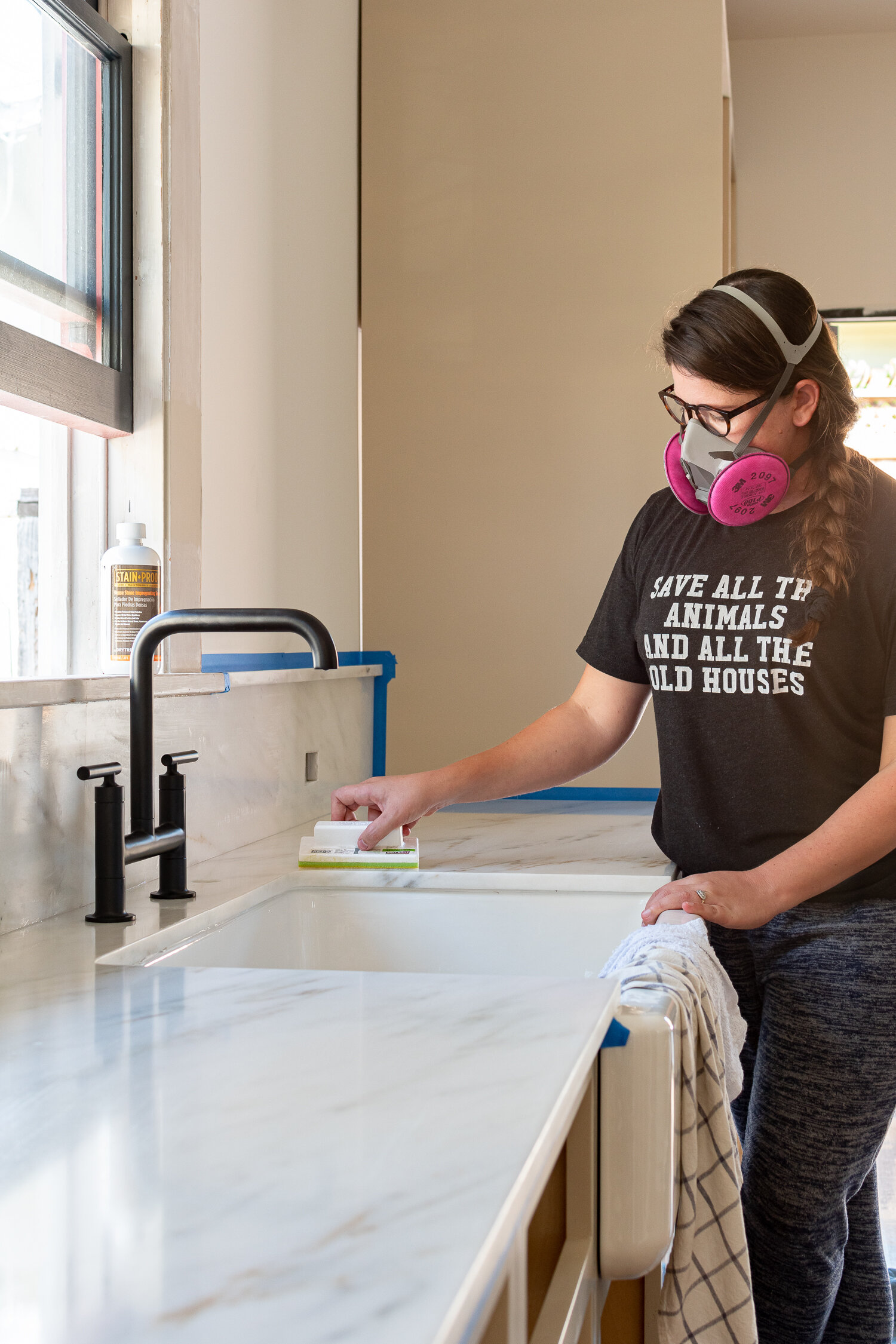
After applying the sealant, allow it to sit on the marble for the recommended amount of time, usually around 15 to 20 minutes. During this time, the marble will absorb the sealant, and the protective barrier will begin to form. If you notice any areas where the sealant has not been absorbed, you can apply a bit more to ensure complete coverage. Once the waiting period is over, it’s time to remove any excess sealant from the surface. Use a clean, dry cloth to gently buff the countertop, wiping away any sealant that remains on the surface. This step is crucial because leaving excess sealant on the marble can result in a hazy or sticky residue that is difficult to remove.
After buffing, it’s important to allow the sealant to cure fully. The curing process can take several hours to a couple of days, depending on the product used. During this time, avoid placing anything on the countertops, including kitchen appliances, dishes, or decorations. The sealant needs time to harden and form a durable barrier against stains and damage. It’s also advisable to avoid using the countertops for food preparation or other activities until the sealant has fully cured. Once the sealant is cured, your marble countertops will be ready to withstand daily use while maintaining their beautiful appearance.
Marble countertops require more frequent sealing than other types of natural stone due to their porous nature. In high-traffic areas such as kitchens, it’s recommended to reseal the countertops every three to six months to ensure continued protection. In less-used areas, such as bathroom vanities, resealing every six to twelve months may be sufficient. You can test the effectiveness of the seal by sprinkling a few drops of water on the surface. If the water beads up, the seal is still intact. If the water soaks into the marble, it’s time to reseal.
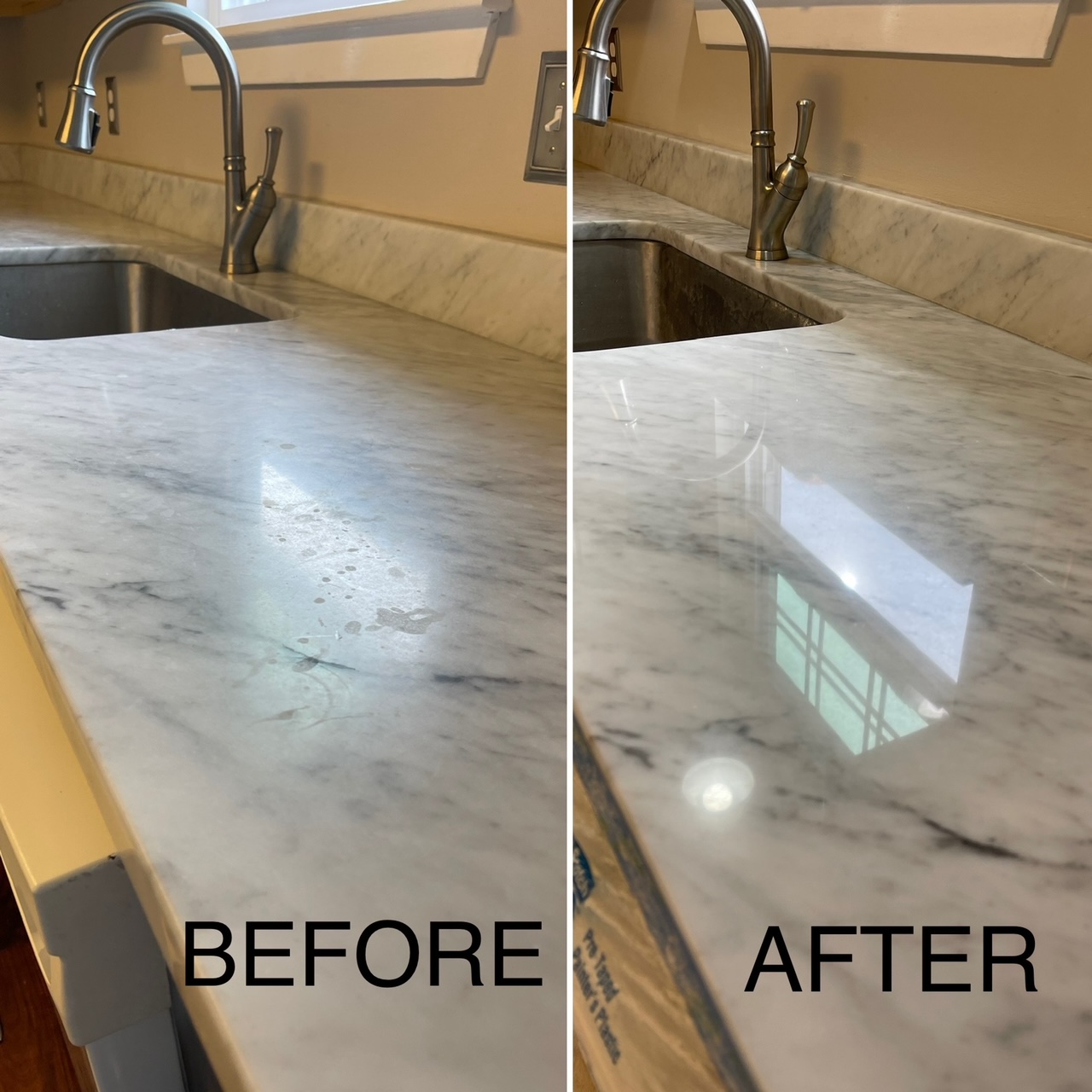
In addition to sealing, proper maintenance is crucial for preserving the beauty of marble countertops. Marble is particularly sensitive to acidic substances, such as lemon juice, vinegar, and wine, which can cause etching, or dull spots on the surface. To prevent etching, it’s important to wipe up spills immediately and avoid placing acidic foods or drinks directly on the marble. Using cutting boards, trivets, and coasters can also help protect the surface from scratches, heat damage, and stains.
When choosing a cleaning product for marble countertops, always opt for a pH-neutral cleaner designed for natural stone. Avoid using abrasive sponges or brushes, as these can scratch the surface and damage the sealant. Regularly dusting the countertops with a soft cloth can also help prevent dirt and debris from accumulating and scratching the marble. By following these maintenance tips, you can keep your marble countertops looking beautiful and extend the life of the sealant.
While sealing and maintaining marble countertops is a straightforward process, it’s important to be aware of the specific needs of your marble. Different types of marble, such as Carrara, Calacatta, or Statuario, may have varying levels of porosity and hardness, which can affect how often they need to be sealed and how they respond to certain sealants. If you’re unsure about the type of marble you have or the best sealing method, consulting with a professional or the supplier of your marble countertops is a good idea. They can provide expert advice tailored to your specific stone and help you choose the right products for optimal protection.
In addition to regular sealing and maintenance, it’s important to avoid common mistakes that can compromise the integrity of the marble and the effectiveness of the sealant. For instance, using harsh chemical cleaners or abrasive pads can strip away the sealant and damage the marble’s surface, leaving it vulnerable to stains and etching. Similarly, neglecting to reseal the countertops as needed can result in the sealant wearing off, exposing the marble to potential damage. Being mindful of these pitfalls and taking proactive steps to protect your marble can help ensure that your countertops remain in top condition for years to come.
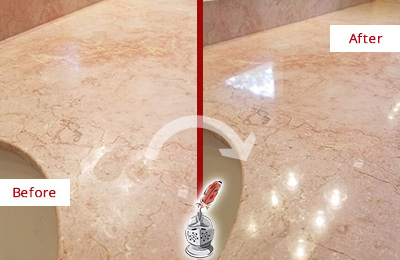
If you prefer a more hands-off approach, professional sealing services are available. Hiring a professional can ensure that the sealing process is done correctly and efficiently, with minimal risk of error. Professionals have access to high-quality sealants and the expertise to apply them effectively, which can save you time and effort. Additionally, they can assess the condition of your countertops and provide recommendations for ongoing maintenance. While professional sealing services come at a cost, they can be a worthwhile investment in the longevity and beauty of your marble countertops.
Marble countertops, with their timeless elegance and unique patterns, can be a stunning focal point in any home. However, keeping them in pristine condition requires a commitment to regular sealing and maintenance. By understanding the sealing process and taking steps to protect your marble from stains, scratches, and etching, you can enjoy the beauty of this natural stone for many years. Whether you choose to seal the countertops yourself or hire a professional, the key is to be proactive and diligent in your care.
Finally, it’s worth noting that while sealing provides a strong defense against damage, it doesn’t make marble completely impervious. Careful use and regular maintenance are still necessary to preserve the stone’s appearance and integrity. By combining proper sealing with mindful daily care, you can ensure that your marble countertops continue to enhance your home’s aesthetic and provide a durable, functional surface for all your needs.
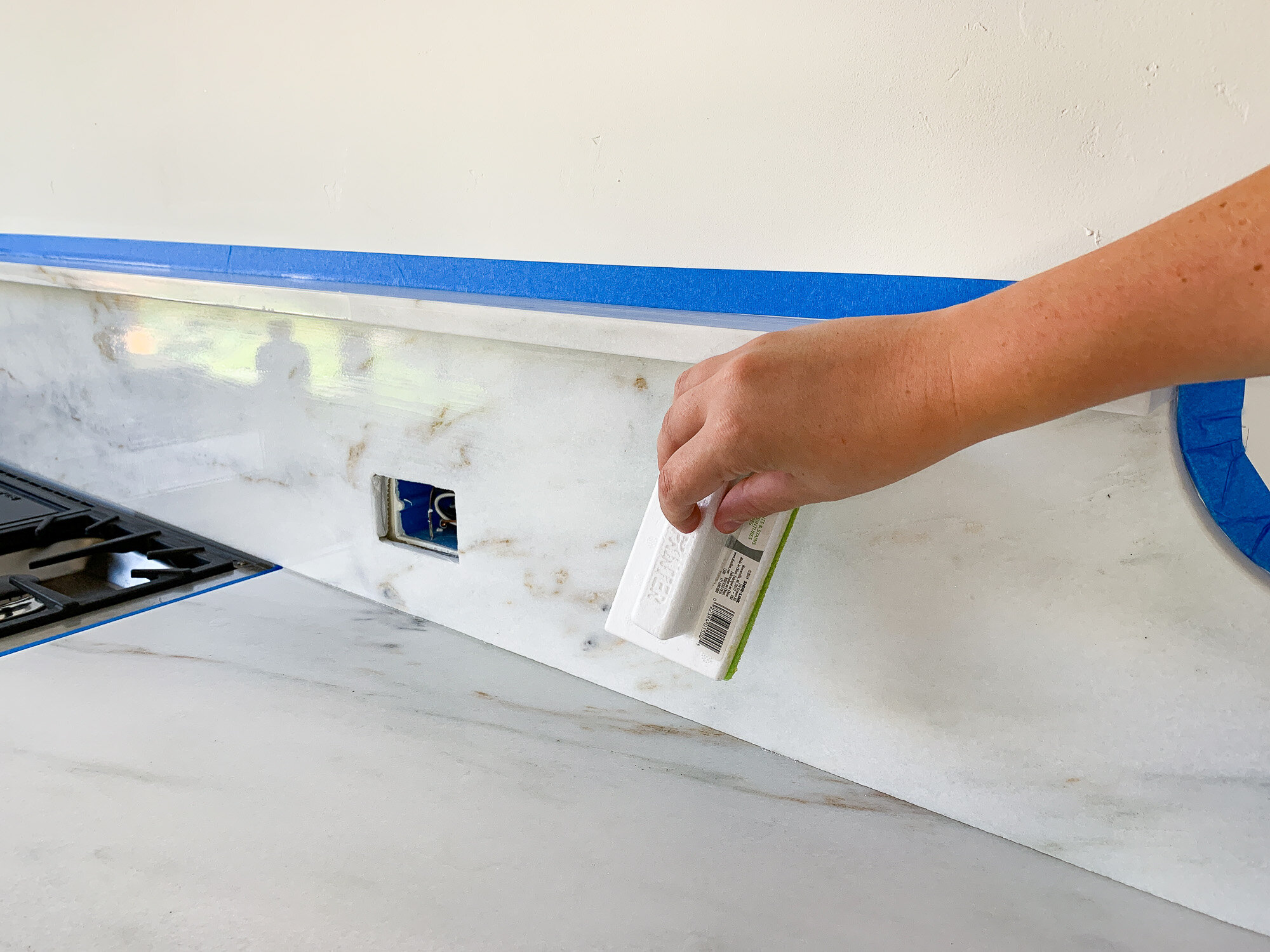
Common Mistakes to Avoid:
One of the most common mistakes when sealing marble countertops is using the wrong type of sealant. Not all sealants are suitable for marble, and using an inappropriate product can result in an ineffective seal or even damage the stone. It’s crucial to choose a sealant specifically designed for marble or natural stone and to follow the manufacturer’s instructions carefully.
Another mistake is not allowing the marble to dry completely before applying the sealant. Any moisture left on the surface can prevent the sealant from adhering properly, reducing its effectiveness and leaving the marble vulnerable to stains and damage. Always ensure the marble is thoroughly dry before beginning the sealing process.
Neglecting to apply multiple coats of sealant when necessary is another common error. Some types of marble may require more than one coat of sealant to achieve adequate protection. Skipping this step can leave the marble susceptible to staining and etching, especially in high-traffic areas. It’s important to follow the manufacturer’s recommendations regarding the number of coats needed for optimal protection.
Using harsh or acidic cleaners on sealed marble countertops is another mistake that can strip away the sealant and damage the stone. Always use pH-neutral cleaners designed for natural stone to preserve the integrity of the seal and protect the marble from harm.
Finally, failing to reseal marble countertops regularly can lead to significant issues over time. The sealant wears away with use, and if the countertops are not resealed as needed, they become vulnerable to stains, etching, and other forms of damage. It’s essential to monitor the condition of the seal and reseal the countertops as recommended based on the level of use.

How often should I seal my marble countertops?
Marble countertops should be sealed every three to six months, depending on the level of use and the type of marble. High-traffic areas, such as kitchen countertops, may require more frequent sealing, while less-used surfaces, such as bathroom vanities, can be sealed less often. You can test the effectiveness of the seal by sprinkling a few drops of water on the surface. If the water beads up, the seal is still intact. If the water soaks into the marble, it’s time to reseal.
What is the best type of sealant for marble countertops?
The best type of sealant for marble countertops is a penetrating sealer specifically designed for natural stone. Penetrating sealers absorb into the stone and fill the pores, protecting within without altering the marble’s natural appearance. For those looking to enhance the color and veining of their marble, an enhancing sealer can be used. Always choose a sealant that is recommended for use on marble to ensure optimal protection.
Can I seal marble countertops myself, or should I hire a professional?
Sealing marble countertops is a task that can be done by homeowners with the right tools and knowledge. However, if you’re unsure about the process or want to ensure the best results, hiring a professional is a good option. Professionals have access to high-quality sealants and the expertise to apply them effectively, ensuring a durable and even seal. Additionally, they can provide maintenance tips and assess the condition of your marble to determine if any repairs or additional care are needed.

How do I know if my marble countertops need to be resealed?
To determine if your marble countertops need to be resealed, you can perform a simple water test. Sprinkle a few drops of water on the surface and observe how it behaves. If the water beads up, the seal is still effective. If the water soaks into the marble, it’s a sign that the sealant has worn off, and it’s time to reseal. Additionally, if you notice any signs of staining or etching, it may indicate that the sealant is no longer providing adequate protection.
What happens if I don’t seal my marble countertops?
If marble countertops are not sealed, they become vulnerable to stains, etching, and other forms of damage. Marble is a porous material, so liquids, oils, and acidic substances can penetrate the surface, leading to stains and dull spots that are difficult or impossible to remove. Sealing the countertops creates a protective barrier that helps preserve the stone’s appearance and extend its lifespan. Without proper sealing, the marble may lose its natural beauty and require costly repairs or replacement.
Can sealing marble countertops change their appearance?
Sealing marble countertops should not significantly change their appearance if the correct type of sealant is used. Penetrating sealers are designed to absorb into the stone without altering its color or finish. However, enhancing sealers can make the marble’s color and veining appear more vibrant. It’s important to test the sealant on a small, inconspicuous area before applying it to the entire countertop to ensure you’re satisfied with the results.
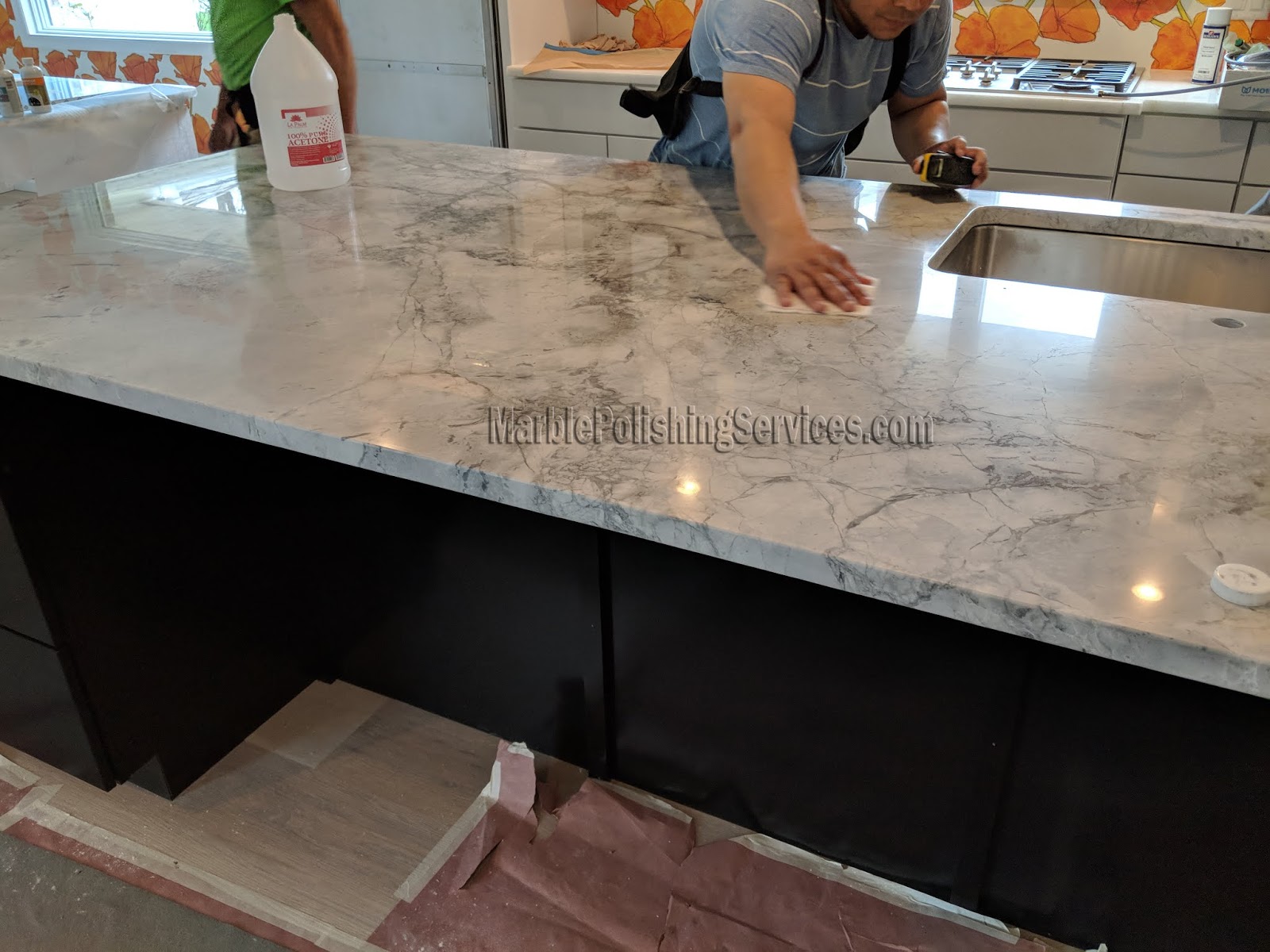
A Simple DIY Test Takes the Guesswork out of Sealing Marble

How to Seal Granite or Marble Countertops

Related articles:
- DIY Refinishing Cultured Marble Countertops
- Marble Countertops In Bathrooms
- Cultured Marble Countertops
- Gray Kitchen Cabinets Marble Countertops
- Modern Kitchen Marble Countertops
- Refinish Cultured Marble Countertop
- Carrara Marble Countertops Bathroom
- Marble Countertops Types
- How To Refinish Marble Countertops
- White Gray Marble Countertops